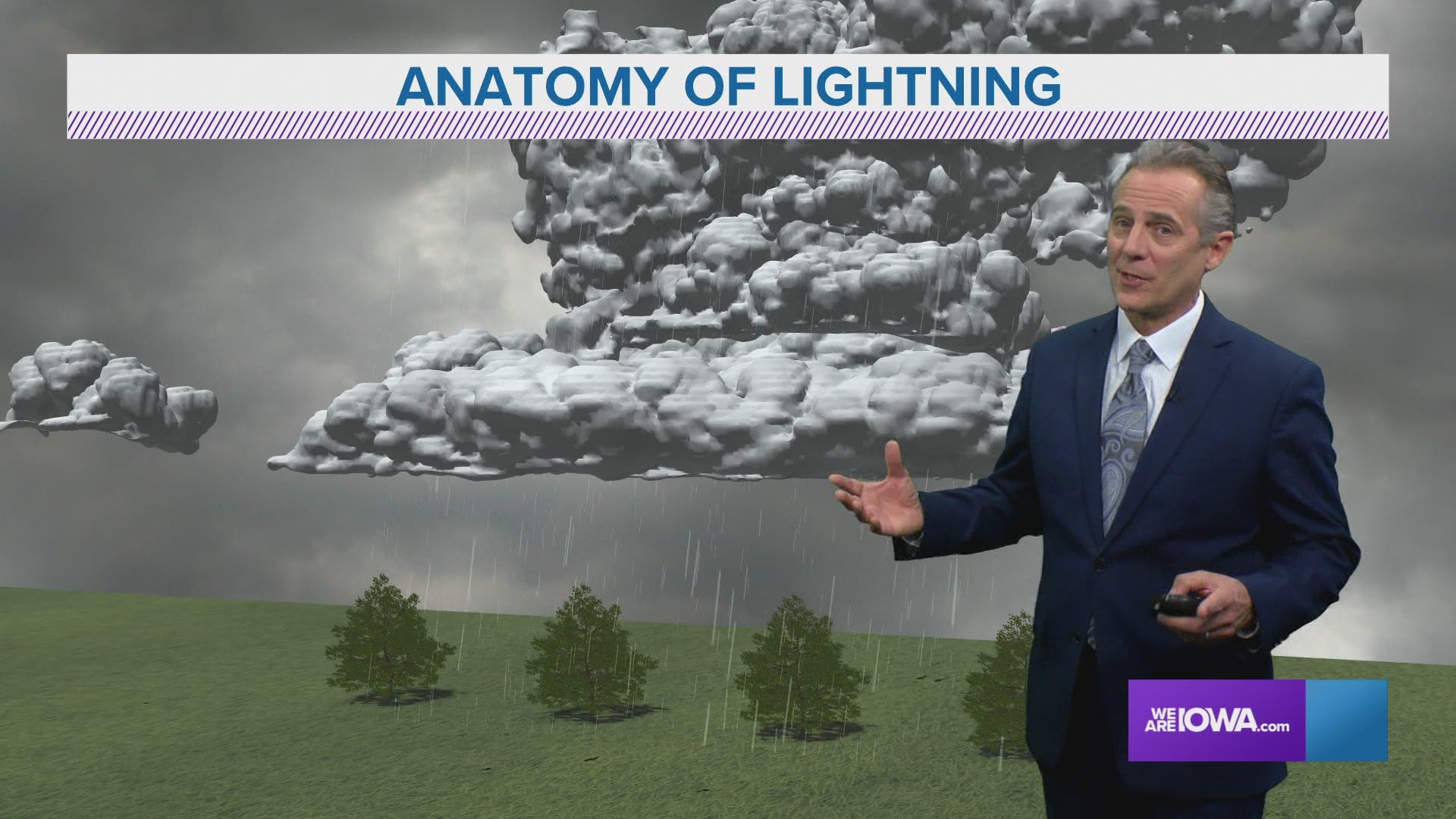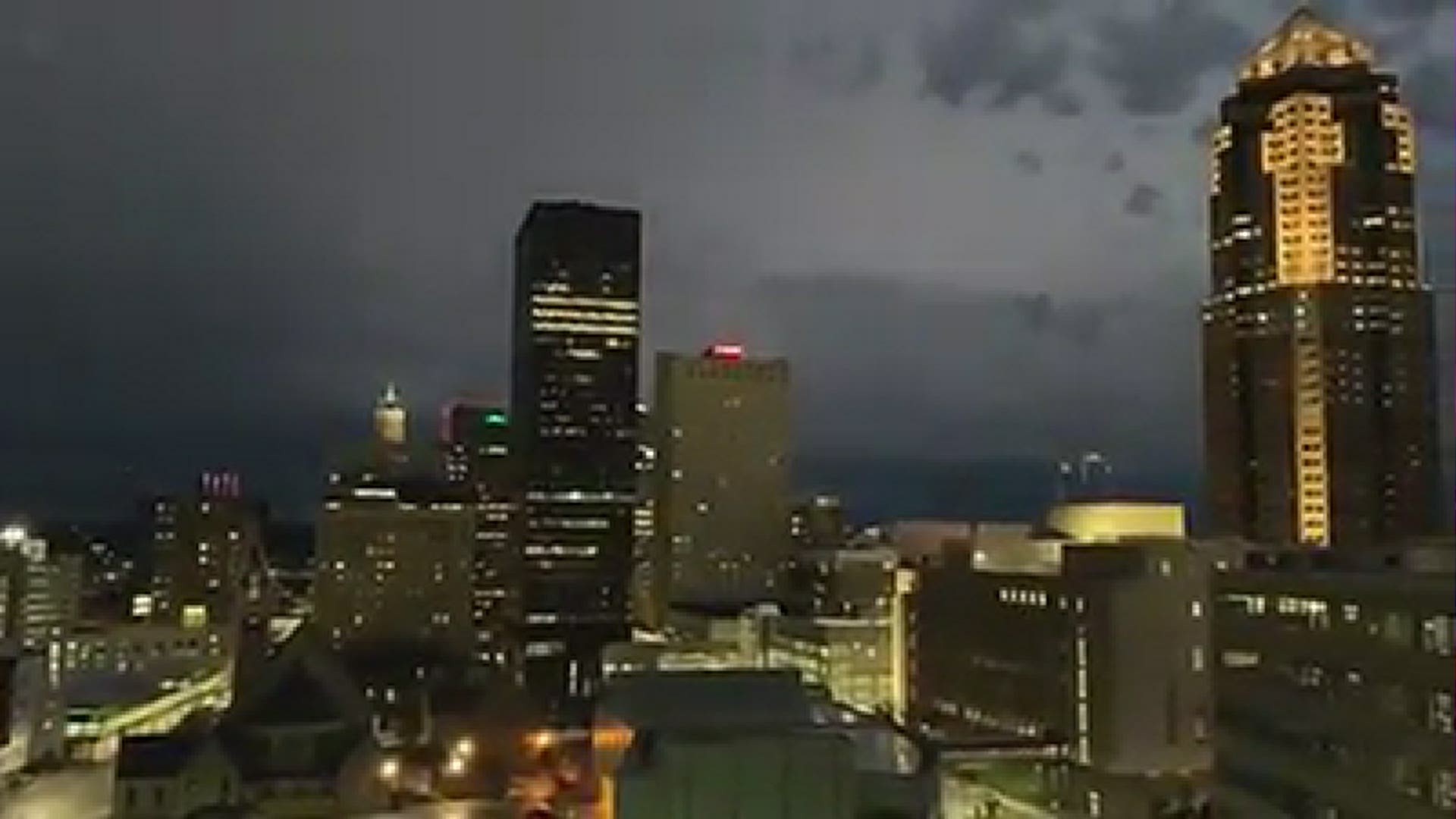DES MOINES, Iowa — Lightning can be fun to watch, but it should be taken just as seriously as other forms of severe weather.
An average of 43 people are killed by lightning annually in the U.S.
There an estimated 25 million lightning strikes in the U.S. and 1.4 billion across the world every year.
Have you ever wondered how lightning forms?
The ground naturally has a positive charge. Meanwhile, thunderstorms form a negative charge. The opposite charges are attracted to one another, resulting in a lightning strike.
Developing storms contain tiny icy crystals due to frigid temperatures tens of thousands of feet above the ground. The turbulent air within a thunderstorm causes those ice crystals to crash into each other.
When these collisions occur, negatively-charged particles called electrons sometimes separate from the ice. Over time, the top of the cloud becomes positively-charged and the base of the cloud forms a negative charge.
Once a thunderstorm establishes a large negative charge at its base, a flow of electrons zigzags toward in what is called a stepped leader.
As the stepped leader approached the ground, positive charges are drawn up away from the surface.
When these two charges connect, a strong electric current sends positive charge into the cloud - known as the return stroke. This is the bright flash that we see.
The return travels at a warp speed of 60,000 miles per second. This process may repeat itself several times over the same path, causing a flicker.
There are various types of lightning, but the most common are intracloud and cloud to ground lightning strikes.


